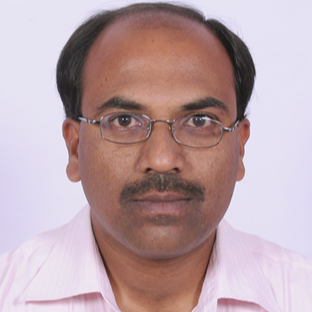
Ranganatha S
Work place: Dept. of Computer Science and Engineering, Government Engineering College, Hassan-573201, Karnataka, India
E-mail: ranganath38@yahoo.co.in
Website:
Research Interests: Computer systems and computational processes, Image Processing, Data Structures and Algorithms, Analysis of Algorithms
Biography
Ranganatha S received B.E degree (Branch: CS & E, College: KIT, Tiptur, Karnataka, India) and M.Tech degree (Specialization: CS & E, College: RVCE, Bangalore, Karnataka, India) in the years 1998-2002 and 2004-2006 respectively from Visvesvaraya Technological University (VTU), Belagavi, Karnataka, India and currently pursuing his PhD in image processing at VTU Research Resource Centre. He has more than 15 years of teaching experience in reputed organizations at graduate and post graduate level. He is currently working as Assistant Professor, Department of Computer Science & Engineering, Government Engineering College, Hassan, Karnataka, India. He has published papers in various national and international journals and conferences. His current research interests include image processing and algorithms.
Author Articles
Eigen and HOG Features based Algorithm for Human Face Tracking in Different Background Challenging Video Sequences
DOI: https://doi.org/10.5815/ijigsp.2022.04.06, Pub. Date: 8 Aug. 2022
We are proposing a unique novel algorithm for tracking human face(s) in different background video sequences. In the beginning, Eigen features and corner points are extracted from the detected face(s). HOG (Histograms of Oriented Gradients) features are isolated from corner points. Eigen and HOG features are combined together. Using these combined features, point tracker keeps track of the face(s) in the frames of the video sequence. Proposed algorithm is being tested on challenging datasets video sequences with technical challenges such as partial occlusion (e.g. moustache, beard, spectacles, helmet, headscarf etc.), changes in expression, variations in illumination and pose; and measured for performance using standard metrics such as accuracy, precision, recall and specificity. Experimental results clearly indicate the robustness of the proposed algorithm on all different background challenging video sequences.
[...] Read more.Color Based New Algorithm for Detection and Single/Multiple Person Face Tracking in Different Background Video Sequence
DOI: https://doi.org/10.5815/ijitcs.2018.11.04, Pub. Date: 8 Nov. 2018
Due to the lack of particular algorithms for automatic detection and tracking of person face(s), we have developed a new algorithm to achieve detection and single/multiple face tracking in different background video sequence. To detect faces, skin sections are segmented from the frame by means of YCbCr color model; and facial features are used to agree whether these sections contain person face or not. This procedure is challenging, because face color is unique and some objects may have similar color. Further, color and Eigen features are extracted from detected faces. Based on the points detected in facial region, point tracker tracks the user specified number of faces throughout the video sequence. The developed algorithm was tested on challenging dataset videos; and measured for performance using standard metrics. Test results obtained ensure the efficiency of proposed algorithm at the end.
[...] Read more.Development of Robust Multiple Face Tracking Algorithm and Novel Performance Evaluation Metrics for Different Background Video Sequences
DOI: https://doi.org/10.5815/ijisa.2018.08.03, Pub. Date: 8 Aug. 2018
In computer vision, face tracking is having wider opportunities for research activities using different background video sequences because of various factors and constraints. Due to the challenges that are increasing day by day, old/existing algorithms are becoming obsolete. There are many powerful algorithms that are limited to certain set of video sequences. In this paper, we are proposing an algorithm that detect and track multiple faces in different background video sequences. Viola-Jones face detection algorithm is used in such a way that, new face/first face need not to be in the starting frame of the selected video sequence. The proposed algorithm successfully detect new face(s) along with existing face(s) by keeping track of the facial data using BRISK feature points. The mean of the old points and new points are calculated based on the area of the facial data. The detected face(s) in further frames undergoes similarity check with existing facial data. If detected facial data and existing facial data mismatches, then the detected facial data is entered into face tracks structure. By using point tracker method, the proposed algorithm track those points that has been set for each of the facial data.
[...] Read more.Image Training, Corner and FAST Features based Algorithm for Face Tracking in Low Resolution Different Background Challenging Video Sequences
DOI: https://doi.org/10.5815/ijigsp.2018.08.05, Pub. Date: 8 Aug. 2018
We are proposing a novel algorithm for tracking human face(s) in different background video sequences. We have trained both face and non-face images which help in face(s) detection process. At first, FAST features and corner points are extracted from the detected face(s). Further, mid points are calculated from corner points. FAST features, corner points and mid points are combined together. Using the combined points, point tracker tracks face(s) in the frames of the video sequence. Standard metrics were adopted for measuring the performance of the proposed algorithm. Low resolution video sequences with challenges such as partial occlusion, changes in expression, variations in illumination and pose took part while testing the proposed algorithm. Test results clearly indicate the robustness of the proposed algorithm on all different background challenging video sequences.
[...] Read more.Other Articles
Subscribe to receive issue release notifications and newsletters from MECS Press journals